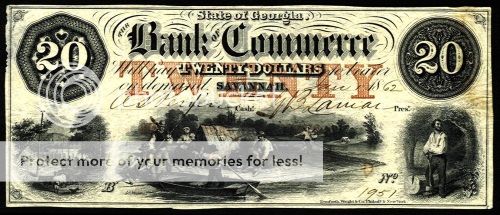ALL THINGS DOLLAR
“The Almighty Dollar” “It’s the dollars that count.” “I need a dollah,
dollah, dollah -- a dollah is what I need…” Here in the U.S., but in
some sense throughout the world, the dollar receives a great deal of
attention. As the world’s reserve currency the dollar is the currency
most used for pricing in international trade. In everyday use,...

“The Almighty Dollar”
“It’s the dollars that count.”
“I need a dollah, dollah, dollah -- a dollah is what I need…”
Here in the U.S., but in some sense throughout the world, the dollar receives a great deal of attention. As the world’s reserve currency the dollar is the currency most used for pricing in international trade.
In everyday use, the dollar is a paper currency, a coin, and an abstract unit of account. It also has a multi-dimensional history as a word and a symbol.
The word “dollar” evolved from the German word “thaler” – a large silver coin first struck in 1518 in Joachimsthal in the Kingdom of Bohemia (later a part of Germany.)
The familiar dollar sign ($) comes from a combination of design elements on the “Spanish milled dollars” of the American colonial period. These were the famous 8 Reale silver trade coins made from the abundant silver mines of Mexico, Bolivia, Chile and Peru under the auspices of the Spanish monarch. The front side (obverse) of the coin bears two pillers or columns around which a banner flutters. The columns represent the Pillars of Hercules, geographically the Rock of Gibraltar and the coast of Morocco that formed the western boundary of the Mediterranean Sea. This was an important boundary of the known world before the Spanish voyages of discovery. The banner is inscribed with the words “Plus Ultra” – Latin for “More Beyond.” The dollar sign’s two verticals with a superimposed “S” recalls this historic Spanish coin.
The first American silver dollars, made at the newly provisioned Philadelphia Mint in 1794 closely resembled the 8 Reale Spanish milled dollar in size, weight, and purity, if not in appearance.
The silver dollars most familiar to modern US coin
collectors are the Morgan Dollars of 1878 through 1921. These were made
in quantities larger than what would have been required for normal
circulation. Instead, their primary function was to back United States
paper currency. The Bland-Allison Act of 1877 required each paper dollar
issued to be backed by a silver dollar (not ten dimes, four quarters,
or two half dollars…) The paper money of that time specifically states
that the US treasury will redeem the currency in “Silver Dollars.” The
result is that there are many silver dollars available to collectors at
relatively reasonable prices.
Paper dollars are another story altogether. Prior to the silver dollar backed paper were the “broken bank notes’ – another collecting favorite. These fascinating examples of mid-19th century bank notes were issued by private banks with no backing by the federal government. Some of these banks were responsible, well managed local institutions of considerable benefit to their communities. Then there were those that were not. And… if one of those banks went broke, and you had their paper money in your possession, too bad. You now were the unfortunate holder of “broken bank notes.” As they say nowadays, What’s in Your Wallet?
At London Coin Galleries Mission Viejo we have some intriguing examples of “all things dollar.” When you’re in the area, be sure to drop in to see them. Or, visit our website at www.londoncoinmissionviejo.com



